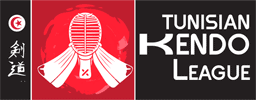Kendo is a modern Japanese martial art that evolved from the traditional samurai swordsmanship known as kenjutsu. The term “kendo” means “way of the sword” and is also known as “Japanese fencing.” It is a physical and mental discipline that emphasizes the development of one’s character through the practice of swordsmanship.


The origins of kendo can be traced back to Japan’s feudal era, when swordsmanship was an essential skill for samurai warriors. During this time, many schools of kenjutsu were developed, each with its own unique techniques and philosophies. Some of the most famous kenjutsu schools were Kashima Shinden Jikishinkage-ryū, Hyoho Niten Ichi-ryū, and Ittō-ryū.
In the 18th and 19th centuries, Japan underwent a period of cultural and political reform known as the Meiji Restoration. During this time, the samurai class was abolished, and the Japanese government encouraged the practice of martial arts as a way to promote physical fitness and national pride. As a result, many of the traditional kenjutsu schools were reformed and modernized into what is now known as kendo.
The first modern kendo organization, the Dai Nippon Butoku Kai (Greater Japan Martial Virtue Society), was founded in 1895. This organization established a set of standardized rules and regulations for kendo, which included the use of protective armor (bogu) and bamboo swords (shinai) to reduce the risk of injury during practice.
Kendo continued to evolve throughout the 20th century, with the development of various styles and techniques. In 1952, the All Japan Kendo Federation was established to oversee and promote kendo throughout Japan and around the world. Today, kendo is practiced by millions of people in Japan and around the world, with international competitions held regularly.
In addition to its martial arts aspect, kendo is also viewed as a way of developing one’s character and personal values. It emphasizes the importance of discipline, respect, and humility, and encourages practitioners to strive for self-improvement both on and off the dojo (training hall).


Launch of Kendo Club in “Club des arts Martiaux de Monastir“ by François Briouze 6th DAN
Launch of Kendo Club in “Club des arts Martiaux de Monastir“ by François Briouze 6th DAN
1st International Kendo Training Camp - Monastir
1st International Kendo Training Camp – Monastir

Association Sportive de Kendo
Creation of Association Sportive de Kendo in Tunis
2nd International Training Camp
2nd international Training Camp
- EKF Affiliation request submitted by Association Sportive de Kendo

Creation of Carthage Kendo Club
- 1st Grading Exam DAN
- 3rd international Training Camp
- Creation of Carthage Kendo Club

European Affiliation by ASK
- Affiliation to the European Federation by Association Sportive de Kendo
- EKF : 1st national selection at the SKOPJIE European Championships
- Creation of Shinzen Kendo Club
- International Training Camps (Tunis, Haouaria…)

Tunisian Kendo League
- Kendo is introduced under the Tunisian Judo Federation and creation of the Tunisian Kendo League
- ASK affiliated to the Tunisian Kendo League
- 2nd National selection for EKC Budapest
- Creation of the Fourth Kendo Club (Kendo Police)
- International training camps (Tunis, Haouaria..)

IKF Affiliation
- World Kendo Championship : 1st tunisian participation
- Training Camp in Japon : Yokohama, Ishinomaki
- Tunisia full member of the international Kendo federation represented by Association Sportive de Kendo
- Grading Exam DAN
- International Training Camps (Tunis, Haouaria…)
- EKF : 3rd participation BELGRADE
- Grading Exam DAN
- International Training Camps
- International Training Camps
- New affiliated club : Iaido Ken No Michi
- International Training Camps
- Affiliation of Jammel Kendo Club

TICAD GAMES
- EKF : Frankfurt, Germany
- 1st Ambassador’s Cup
- 1st FABA Cup
- TICAD GAMES :Training Camp and African grading exam DAN
- EKF : Beauvais, France
- Creation of Ariana Kendo Association, Ben Arous Kendo Club, Kendo Kids Menzah 9
- Creation of Tunis University Kendo Club
- Ronin Cup FABA, ABE Cup, Ambassador’s Cup
- International Training Camps
